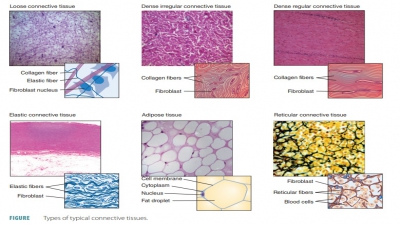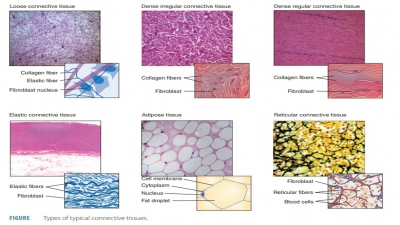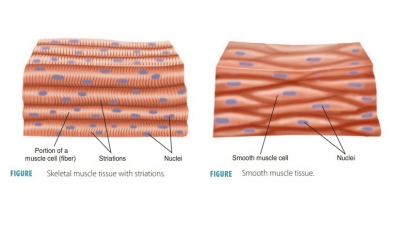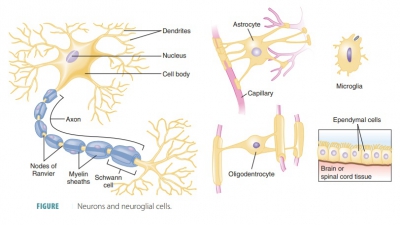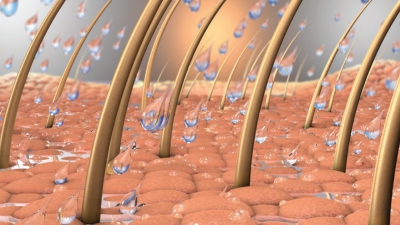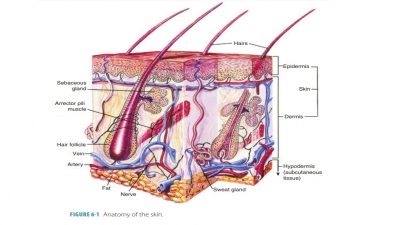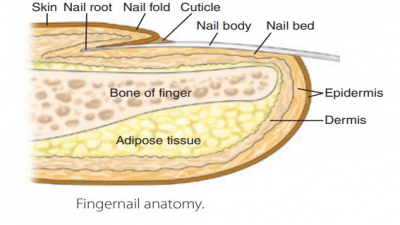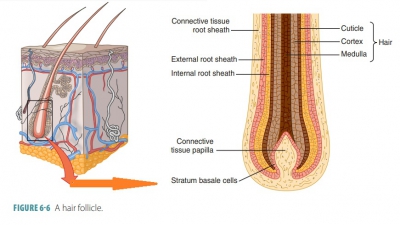Tissue Repair
| Home | | Anatomy and Physiology | | Anatomy and Physiology Health Education (APHE) |Chapter: Anatomy and Physiology for Health Professionals: Levels of Organization : Tissues
The steps of tissue repair are based on division and migration of cells. These activities are controlled by growth factors also known as wound hormones, which are released by injured cells.
Tissue Repair
The steps of tissue repair are
based on division and migration of cells. These activities are controlled by
growth factors also known as wound
hormones, which are released by injured cells. Destroyed tissue is replaced
with the same type of tissue in a process called regeneration. When fibrosis
occurs, fibrous connective tissue is produced in greater quantities, forming scar tissue. Regeneration or fibrosis
occurs as a result of two factors: the type of tissue that was damaged and the
severity of the injury. When the skin is injured, both regeneration and
fibrosis occur for tissue repair.
Inflammation begins the process
of tissue repair. The capillaries dilate and become highly permeable. White
blood cells and plasma fluid (containing strong clotting proteins, antibodies,
and other helpful sub-stances) reach the injured area to construct a clot. This
holds the wound edges together to isolate the injured area. Bacteria, toxins,
and other harmful agents are prevented from spreading to the surrounding
tissues. The exposed part of the clot dries and hardens, form-ing a scab. Lymphatic vessels or macrophages
eventu-ally remove debris, parts of destroyed cells, and excess fluid that may
be left behind.
A phase called organization begins wherein the blood
clot is replaced by granulation tissue
. This del-icate pink tissue contains capillaries in the formation of a new
capillary bed. It is granular in appearance due to the presence of the
capillaries and bleeds easily if disturbed. Fibroblasts proliferate to produce
growth factors and new collagen fibers. Certain fibroblasts contract to pull
the wound margins together or to pull existing blood vessels into the wound.
Macrophages digest the original blood clot. Collagen fibers continue to be
deposited. Granulation tissue is very resistant to infection (because it
produces substances that inhibit bacteria) and eventually becomes scar tissue.
When sufficient matrix has accumulated, the fibroblasts either return to resting
or die.
The surface epithelium
regenerates and grows under the scab, which soon detaches. Underneath, the
fibrous tissue matures and contracts. The epithelium eventually looks like the
surrounding skin and is fully regenerated, with an underlying area of scar
tissue. Based on the wound’s severity, the scar tissue may be invisible, appear
as a thin white line, or may appear more substantially. This entire process
describes how a skin cut, scrape, or puncture heals. Simple infections heal
only by regeneration (such as a sore throat or a pimple). Severe and
destructive infections cause clot formation or scarring.
